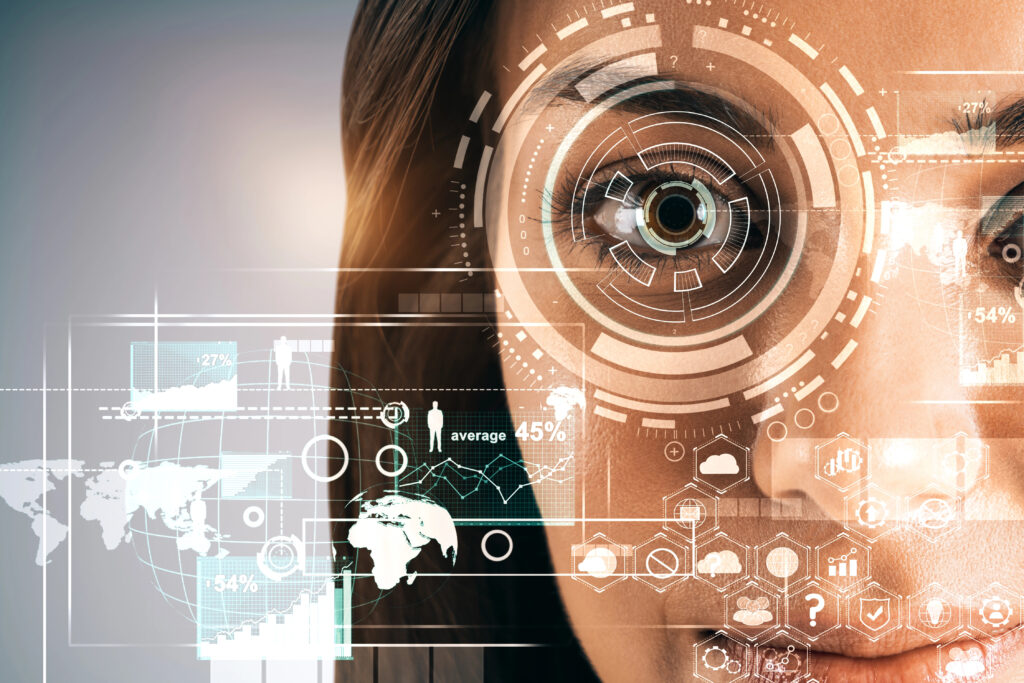As a data scientist, you find yourself at the forefront of an exciting new frontier. With the meteoric rise of artificial intelligence, you now have unprecedented capabilities to derive value from data. New AI techniques allow you to process vast datasets, identify intricate patterns, and generate powerful predictive models. Rather than replacing you, AI accentuates your skills. It enables you to automate routine tasks to focus on higher-level analysis and strategy. The synergistic relationship between AI and data science will shape innovations in the future. You have the opportunity to push new boundaries in fields ranging from healthcare to transportation. But to fully harness this potential, you must stay abreast of emerging AI tools and understand how they integrate with your existing workflows. The journey ahead promises to be challenging and rewarding in equal measure.
The Synergistic Relationship Between AI and Data Science

AI Enhances Data Collection and Processing
Artificial intelligence has accelerated the ability to collect and process vast amounts of data. Techniques like machine learning and deep learning have enabled computers to identify patterns in data that would be nearly impossible for humans to uncover manually. Artificial Intelligent systems can sift through massive datasets, recognizing complex relationships and insights that would otherwise remain hidden.
AI Powers Advanced Analytics
AI also enhances data analysis, enabling more sophisticated analytics. Furthermore, machine learning algorithms can detect subtle patterns and correlations in massive datasets that humans would likely miss. AI powers predictive analytics, allowing data scientists to build models that predict future outcomes and trends. These advanced analytical capabilities lead to more accurate predictions and insights.
New Possibilities for Innovation
The combination of AI and data science has unlocked groundbreaking possibilities for innovation. And so, AI can analyze patient data to improve diagnosis and treatment, detect fraud, and optimize security systems. It also enables personalized recommendations, smart assistants, autonomous vehicles, and more. Together, AI and data science are transforming industries and enhancing many areas of life.
An Iterative Relationship
AI and data science have a synergistic relationship. Data fuels AI, providing the massive datasets required to train machine learning algorithms. AI then enhances data processing and analytics, leading to even larger datasets. Thus, this virtuous cycle continues, with each field pushing the other forward in a race toward increasingly sophisticated data analysis and intelligent systems. AI and data science are interdependent, and their intersection drives rapid progress on both fronts.
The relationship between AI and data science is synergistic, enhancing both fields and enabling transformative innovation. AI powers advanced data processing and analytics, while data fuels increasingly intelligent systems. This interplay has unleashed new possibilities that revolutionize life and work across all sectors. The future of these rapidly advancing fields depends on their continued collaboration and progress together.
How AI Enhances Data Processing and Analysis
Streamlining Data Collection
- Artificial intelligence has significantly improved how data is gathered and organized. Machine learning algorithms can detect patterns in vast amounts of data to categorize and tag information automatically. This reduces the need for manual data entry and labeling, accelerating the data collection process.
Automating Data Cleaning
- Raw data often contains errors, inconsistencies, and missing values that must be addressed before analysis. AI systems can detect and fix these issues, a process known as data cleaning or data wrangling. Algorithms can identify anomalies, fill in missing values, and standardize formatting – saving data scientists valuable time.
Finding Hidden Insights
- AI enhances data analysis by uncovering non-obvious patterns and relationships. Using techniques like cluster analysis, neural networks, and decision trees, AI can group data points with similar attributes and predict outcomes. This allows data scientists to gain a deeper understanding of the data and discover key insights that would otherwise remain hidden.
Optimising Decision Making
- The predictive capabilities of AI allow data-driven decisions to be made with greater accuracy and confidence. By building models on current and historical data, AI systems can forecast future trends, predict outcomes, and recommend optimal solutions. This data-backed decision-making leads to improved productivity and innovation.
AI has proven to be a catalyst for maximizing data’s potential. When combined with human judgment and oversight, AI-powered data processing and analysis lead to groundbreaking advancements in fields like healthcare, transportation, and education. And so, the synergistic relationship between AI and data science will only continue to grow.
Real-World Applications of AI-Powered Data Science
1. Personalized Recommendations
Artificial intelligence excels at finding patterns in massive datasets to determine connections between people and products. For example, e-commerce companies use AI to analyze customer data and identify items a particular shopper will likely buy based on their browsing and purchase history. These personalized product recommendations are highly effective at driving additional sales. For instance, 35% of what people watch on Netflix comes from the company’s AI-based recommendation system(which could possibly be more now as time goes on).
2. Predictive Analytics
AI has enabled data scientists to gain valuable insights through predictive modeling. By analyzing historical data, AI can identify trends and patterns to forecast future outcomes with a high degree of accuracy. Predictive analytics has applications in areas like healthcare, education, transportation, and finance. For instance, banks use predictive models to detect fraudulent transactions, and credit card companies rely on them to anticipate customer churn.
3. Automated Data Processing
Artificial intelligence excels at automating repetitive and mundane data tasks, freeing up data scientists to focus on more complex work. AI can extract information from documents, transcribe audio files, detect anomalies in datasets, and clean and structure raw data. These types of automated data processing are essential for gaining business insights efficiently. For example, an AI system can analyze thousands of customer service call transcripts to identify common complaints and how they were resolved.
AI enhances data science through personalized recommendations, predictive analytics, and automated data processing. By leveraging artificial intelligence, data scientists can gain a competitive advantage, uncover critical insights to improve business outcomes, and accelerate innovation. The future will see continued progress at the intersection of these two fields.
The Future Impact of AI and Data Science on Business
Automating Business Processes
- Artificial intelligence has the potential to automate business processes and workflows significantly. AI systems can take over repetitive and mundane tasks currently performed by humans, allowing knowledge workers to focus on more strategic priorities. For example, AI chatbots and virtual assistants can handle customer service inquiries and fundamental questions, while AI can automate processing forms, documents, and invoices. These types of automation will drastically improve business efficiency and productivity.
Gaining Data-Driven Insights
- Combining AI and data science allows businesses to gain valuable insights from vast amounts of data. AI techniques like machine learning can detect complex patterns in data that humans would miss. Data scientists can use AI to analyze customer, operational, and industry data to identify trends, optimize resource allocation, and find new opportunities for growth. For instance, many companies use AI and data science to analyze customer data, build predictive models, and gain a 360-degree view of their customers to improve marketing and personalization.
Enhancing Predictive Capabilities
- AI and data science also enhance a business’s ability to predict future outcomes with a high degree of accuracy. Machine learning models can analyze historical data and identify patterns to predict customer behavior, sales, demand, risks, and more. For example, many companies use predictive analytics to anticipate customer churn, forecast sales, optimize inventory levels, and detect fraud. Using predictive techniques powered by AI and data science allows businesses to gain a competitive advantage by enabling data-driven decision-making.
- In summary, artificial intelligence and data science have an extremely synergistic relationship that will transform businesses. When combined, AI and data science provide automation, insight generation, and prediction capabilities that will drive innovation, optimize operations, and accelerate growth. Companies that harness the power of AI and data science will gain a significant competitive advantage.
FAQs: Understanding the Power of Artificial Intelligence and Data Science
How does AI enhance data science?
Artificial intelligence amplifies the potential of data science through automation and prediction. AI systems can analyze massive datasets, identifying patterns and insights that would be nearly impossible for humans alone. Machine learning algorithms discover complex relationships in data that lead to predictive models. These models fuel AI applications like recommendation systems, fraud detection, and predictive maintenance.
What types of AI are used in data science?
Several AI techniques are commonly applied in data science:
- Machine learning uses statistical techniques to give computer systems the ability to “learn” with data without being explicitly programmed. Algorithms build a mathematical model based on sample data, known as “training data,” to make predictions or decisions without being explicitly programmed to perform the task.
- Deep learning is a type of machine learning that uses neural networks and algorithms inspired by the human brain. Deep learning models are excellent for image recognition, speech recognition, and natural language processing.
- Computer vision is an AI that can identify and process images as humans do. It is used for facial recognition, object recognition, and self-driving cars.
- Natural language processing focuses on the interaction between computers and humans using the natural language. It is used for machine translation, sentiment analysis, chatbots, and more.
What are some examples of AI and data science working together?
AI and data science collaborate in many areas, including:
- Image recognition: AI uses machine learning to detect patterns and identify objects, scenes, and people in images. Data science analyses massive datasets of images to uncover insights.
- Predictive analytics: AI builds models to forecast outcomes and events. Data science tests and optimizes those models using cross-validation and other techniques.
- Personalization: AI makes product or content recommendations based on past behavior and preferences. Data science leverages user data to improve the accuracy of recommendations.
- Healthcare: AI helps detect diseases, analyze medical scans, and gain insights from patient records. Data science finds patterns that lead to more accurate diagnosis and treatment.
- Automated vehicles: AI powers self-driving cars and advanced driver assistance systems. Data science uses data from sensors and cameras to navigate, detect objects, and avoid collisions safely.
- Fraud detection: AI looks for anomalous patterns that could indicate fraud. Data science analyses transaction data to build AI models that can detect fraud with a high degree of accuracy.
To Summarize…
Looking to the future, the synergistic relationship between artificial intelligence and data science has immense potential. As AI capabilities continue advancing, more powerful techniques for processing and analyzing vast datasets will emerge. You stand at the dawn of a new era where AI and data science will catalyze transformative breakthroughs across industries and research fields. The opportunities stretch beyond the imagination; leveraging these synergies allows you to pioneer solutions to humanity’s grand challenges. It is an exciting time, ripe with prospects to push boundaries and redefine what is possible. You have only scratched the surface of what can be achieved when AI and data science work hand in hand. Keep seeking innovative ways to harness their combined strengths. The sky is the limit.
More Stories
Ultra Ethernet Sets New Standard for Intelligent, Scalable Data Movement in IoT and Edge AI
In the fast-changing world of IoT and edge AI, the Ultra Ethernet Consortium (UEC) launched its groundbreaking 1.0 specification. This new standard redefines Ethernet’s role in smart, scalable data movement.
Hitachi Empowers Real-Time Data Integration with EverFlex AI Data Hub
In today’s data-driven world, Hitachi Vantara’s EverFlex AI Data Hub becomes a crucial tool for real-time data integration.
Smart Energy Integration Accelerates AI Data Center Evolution in Malaysia
Malaysia’s smart energy & AI data initiative pioneers a venture that blends smart energy integration with AI-driven data center development
Meta AI App Adds Warning to Prevent Accidental Sharing of Private Chats
In today's world, digital privacy is more important than ever. Meta has taken a major step to protect user data....
Android Instant Apps Retired After Years of Low Adoption
Google decides to retire Android Instant Apps by December 2025 as they struggled to capture user interest since its launch in 2017.
OpenAI Cracks Down on State Sponsored Abuse of ChatGPT
OpenAI has taken a decisive step to thwart state-sponsored exploitation of its ChatGPT technology. As detailed in a comprehensive threat intelligence report, OpenAI has disabled numerous accounts implicated in cyber operations orchestrated by state actors from countries including Russia, China, and North Korea.


